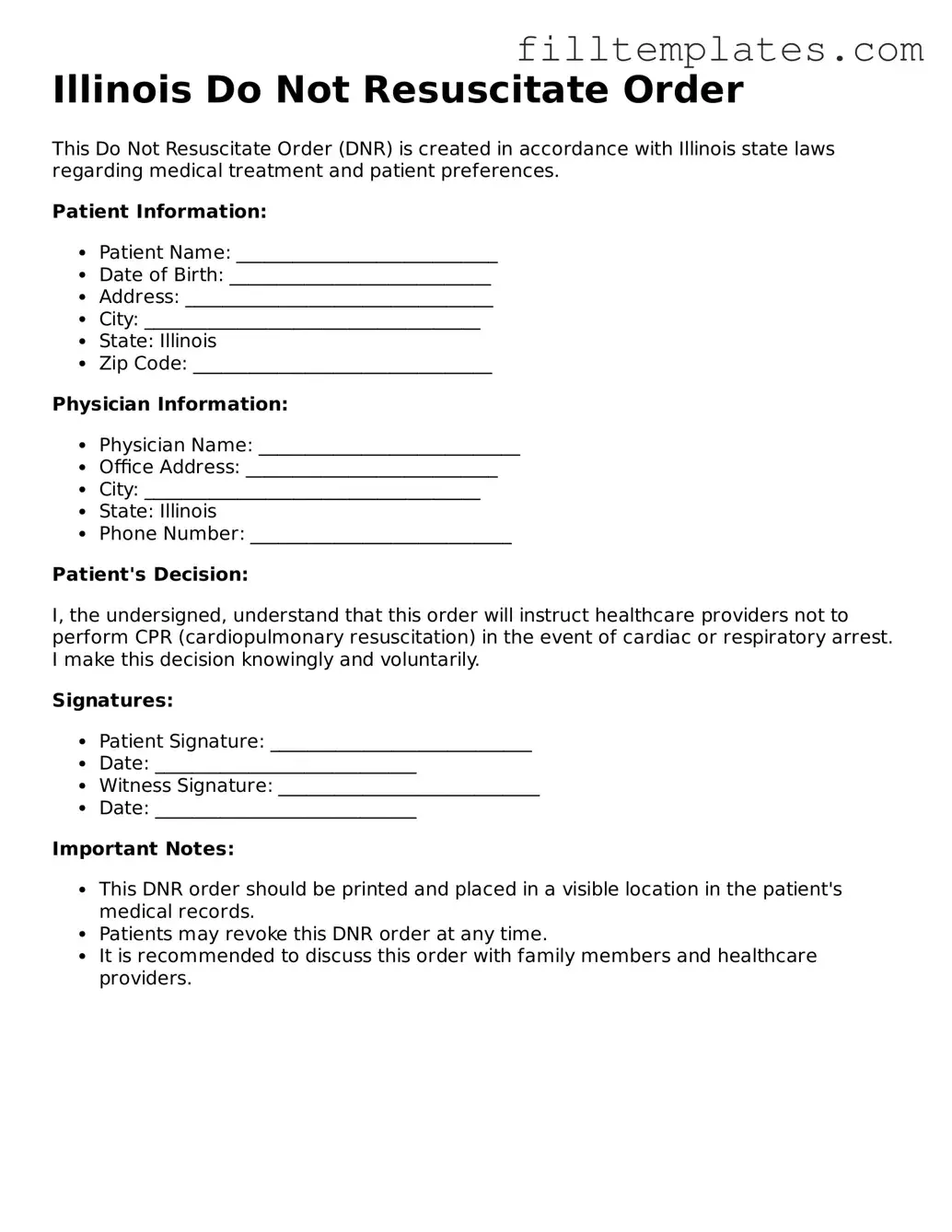Official Do Not Resuscitate Order Template for the State of Illinois
A Do Not Resuscitate (DNR) Order form in Illinois is a legal document that allows individuals to express their wishes regarding resuscitation efforts in the event of a medical emergency. This form ensures that healthcare providers respect the decision not to perform life-saving measures, such as cardiopulmonary resuscitation (CPR). By completing this document, individuals can maintain control over their medical treatment preferences during critical situations.
Open Do Not Resuscitate Order Editor
